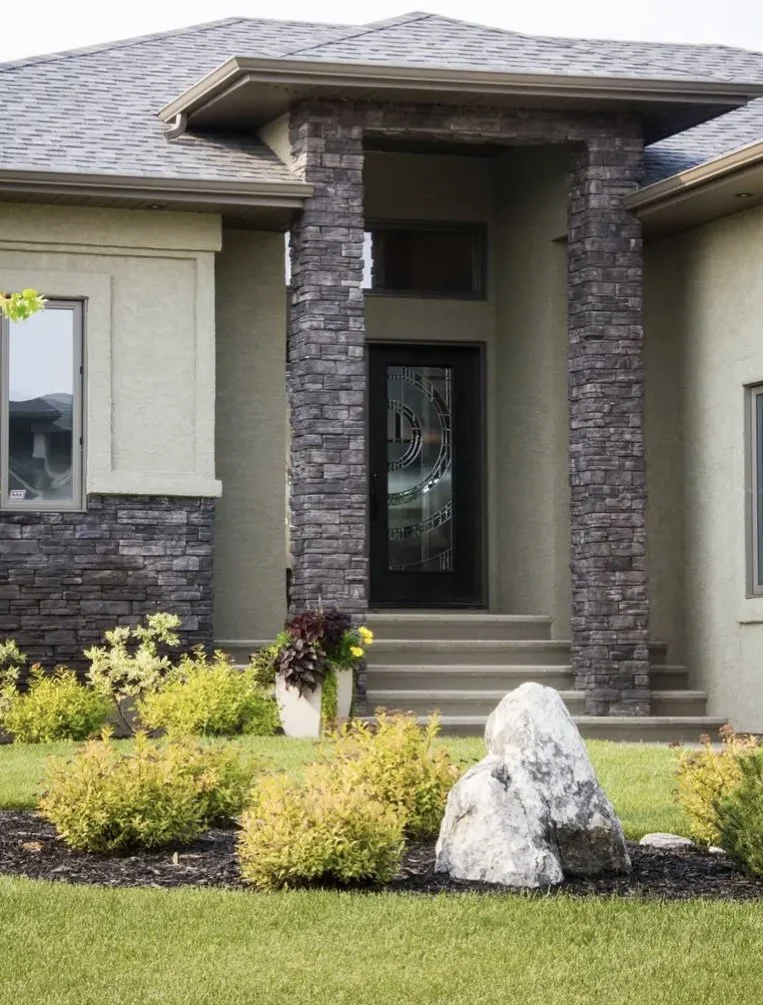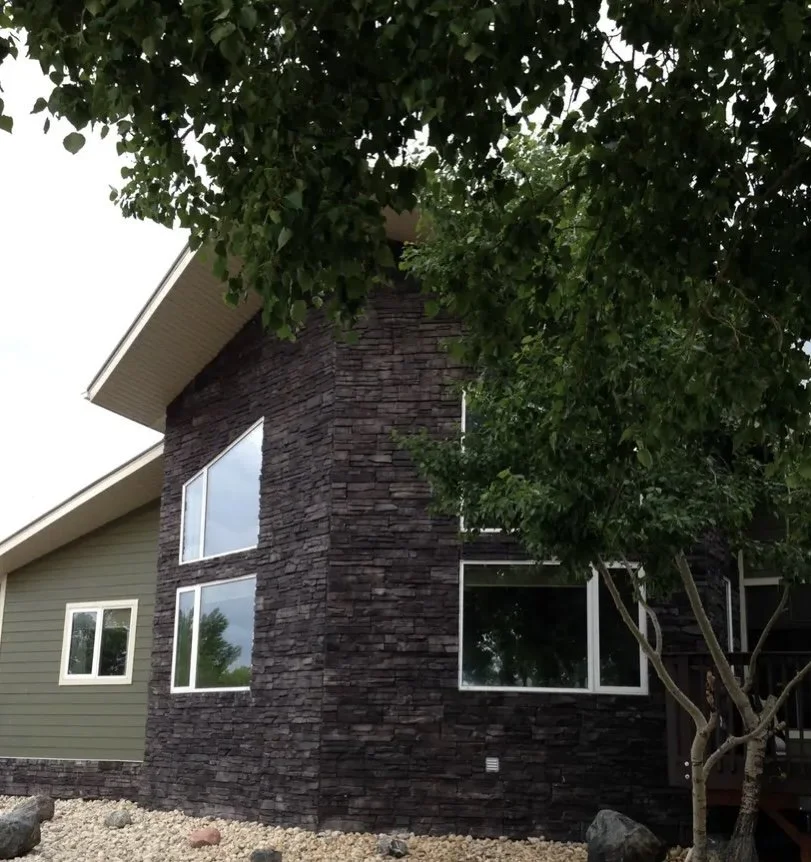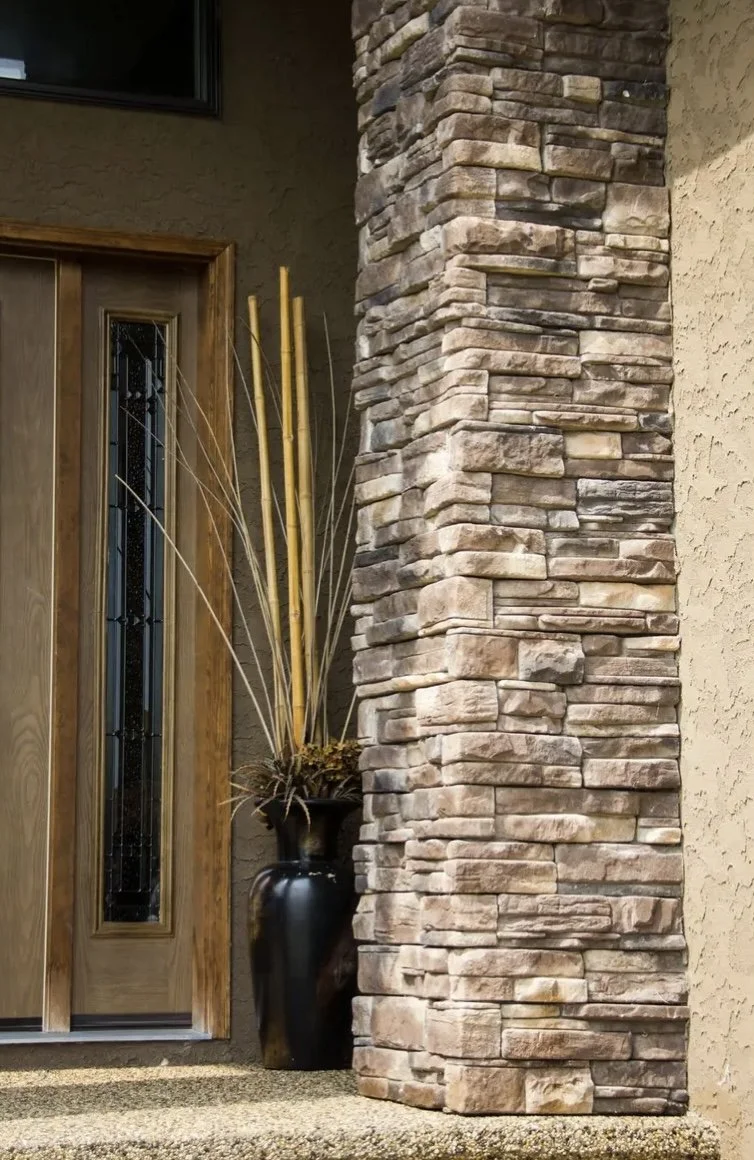Residential
Overall, a stone finish on a residential building is chosen for its aesthetic appeal, durability, and the ability to add a touch of elegance and character to the structure.
A stone finish on a residential building refers to the use of natural or synthetic stone materials as an exterior cladding or decorative element. This finish is applied to the building's façade to enhance its aesthetic appeal and provide a durable and visually appealing surface. The use of stone finishes can give a sense of solidity, timelessness, and sophistication to the overall design.
There are some key points in considering this type of finish.
Materials: Stone finishes can be achieved using various materials, including natural stones such as granite, limestone, slate, or marble, as well as synthetic materials designed to mimic the look of natural stone.
Installation: The stones can be installed in different ways, such as stacked, in a brick pattern, or as veneer. The installation method depends on the type of stone and the design preferences.
Appearance: Stone finishes offer a wide range of colors, textures, and patterns, allowing homeowners to choose a style that complements the overall architecture and design of the building. The appearance can vary from rugged and rustic to smooth and contemporary.
Durability: Stone is a durable material that can withstand weathering, UV exposure, and other environmental factors. This makes it a popular choice for exterior finishes, providing long-lasting protection for the building.
Architectural Styles: Stone finishes are versatile and can be used in various architectural styles, including traditional, modern, rustic, and contemporary designs. The choice of stone and its application can significantly impact the overall aesthetic of the building









